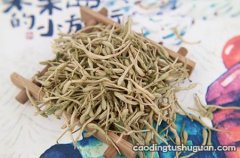仁爱版初二年级上册英语语法
【仁爱版初二年级上册英语语法】

文章插图
一、 一般现在时
1.概念:经常、反复发生的动作或行为及现在的某种状况 。
2.时间状语: Always, usually, often, sometimes, every week (day, year, month…) , once a week(day, year, month…), on Sundays,
3.基本结构:动词 原形 (如主语为第三人称单数,动词上要改为第三人称单数形式)
4.否定形式:主语+am/is/are +not+其他; 此时态的谓语动词若为行为动 词,则在其前加don't, 如主语为第三人称单数,则用doesn't,同时还原行为动词 。
5.一般疑问句:把be动词放于句首;用助动词do提问,如主语为第三人称单数,则用does,同时,还原行为动词 。
6.例句:It seldom snows here.这里很少下雪 。
He is always ready to help others.他总是乐于帮助别人 。
Action speaks louder than words.事实胜于雄辩 。
二、 一般过去时
1.概念:过去某个时间里发生的动作或状态;过去习惯性、经常性的动作、行为 。
2.时间状语:ago, yesterday, the day before yesterday, last week, last(year, night, month…), in 1989, just now, at the age of 5, one day, long long ago, once upon a time, etc.
3.基本结构:主语+动词或be的过去时+名词
4.否定形式:主语+was/were +not+其他;在行为动词前加didn't,同时还原行为动词 。
5.一般疑问句:was或were放于句首;用助动词do的过去式did 提问,同时还原行为动词 。
6.例句:She often came to help us in t hose days.那些天她经常来帮助我们 。
I didn't know you were so busy.我不知道你是这么忙 。
三、 一般将来时
1.概念:表示将要发生的动作或存在的状态及打算、计划或准备做某事 。
2.时间状语:Tomorrow, next day(week, month, year…),soon, in a few minutes, by…, the day after tomorrow, etc.
3.基本结构:主语+am/is/are +going to + do+其它;主语+will/shall + do+其它
4.否定形式:主语+am/is/are not going to do ;主语+will/shall not do+其它
5.一般疑问句:be放于句首;will/shall提到句首 。
6.例句:They are going to have a competition with us in studies.他们将有一场比赛和我们一起研究 。
It is going to rain.天要下雨了 。
四、 一般过去将来时
1.概念:立足于过去某一时刻,从过去看将来,常用于宾语从句中 。
2.时间状语:The next day (morning, year…),the following month(week…),etc.
3.基本结构:主语+was/were +going to + do+其它;主语+would/should + do+其它
4.否定形式:主语+was/were+not + going to + do; 主语+would/should + not + do.
5.一般疑问句:was或were放于句首;would/should 提到句首 。
6.例句:He said he would go to Beijing the next day.他说他第二天要去北京 。
I asked who was going there.我问,谁要去那里 。
五、 现在进行时
1.概念:表示现阶段或说话时正在进行的动作及行为 。
2.时间状语:Now, at this time, days, etc. look. listen
3.基本结构:主语+be +doing +其它
4.否定形式:主语+be +not +doing+其它
5.一般疑问句:把be动词放于句首 。
6.例句:How are you feeling today?你今天感觉如何?
He is doing well in his lessons.在课上他表现得很好 。
六、 过去进行时
1.概念:表示过去某段时间或某一时刻正在发生或进行的行为或动作 。新$课$标$第$一$网
2.时间状语:at this time yesterday, at that time或以when引导的谓语动词是一般过去时的时间状语等 。
3.基本结构 主语+was/were +doing +其它
4.否定形式:主语+was/were + not +doing+其它
5.一般疑问句:把was或were放于句首 。(第一个字母大写)
6.例句:At that time she was working in a PLA unit.那段时间她在人民解放军部队工作 。
When he came in, I was reading a newspaper.他进来时,我正在读报纸 。
七、 将来进行时
1.概念:表示将来某一时间正在进行的 动作,或表示要在将来某一时间开始,并继续下去的动作 。常用来表示询问、请求等 。
2.时间状语:Soon, tomorrow, this evening,on Sunday, by this time,in two days, tomorrow evening
3.基本结构:主语+shall/will + be +现在分词+其它
4.否定形式:主语+shall/will + not + be +现在分词+其它
5.例句:This time next day they will be sitting in the cinema.下一天的这个时间,他们正坐在电* 。
He won’t be coming to the party.他不去参加聚会了 。
八、 过去将来进行时
1.概念:表示就过去某一时间而言,将来某一时刻或某一段时间正在进行的动作,主要用于宾语从句中,尤其多用于间接引语中 。
2.基本结构:should/would + be +现在分词
3.例句:They said they would be coming.他们说了他们将要来 。
He said he could not com e because he would be having a meeting.他说他不能来因为要开会 。
九、 现在完成时
1.概念:过去发生或已经 完成的动作对现在造成的影响或结果,或从过去已经开始,持续到现在的动作或状态 。
2.时间状语:yet,already,just,never,ever,so far,by now,since+时间点,for+时间段,recently, lately, in the past few years, etc.
3.基本结构:主语+have/has +p.p(过去分词)+其它
4.否定形式:主语+have/has + not +p.p(过去分词)+其它
5.一般疑问句:have或has 。
6.例句:I've written an article.我已经写了一篇论文 。
The countryside has changed a lot in th e past few years.在过去的几年,农村发生了巨大的变化 。
十、 过去完成时
1.概念:以过去某个时间为标准,在此以前发生的动作或行为,或在过去某动作之前完成的行为,即“过去的过去” 。
2.时间状语:Before, by the end of last year (term, month…), etc.
3.基本结构:主语+had + p.p(过去分词)+其它 4.否定形式:主语+had + not +p.p(过去分词)+其它
5.一般疑问句:had放于句首 。
6.例句:As soon as we got to the station, the train had left.当我们到车站的时候,火车已经开走了 。
By the end of last month. We had reviewed four books.到上个月底 。我们有了四本书 。
基本结构:主语+had+p.p(过去分词)+其它
①肯定句:主语+ had+p.p(过去分词)+其它
②否定句:主语+ had+ not+p.p(过去分词)+其它
③一般疑问句:Had+主语+p.p(过去分词)+其它
④特殊疑问句:特殊疑问词+一般疑问句
十一、 将来完成时
1.概念:在将来某一时刻之前开始的动作或状态
2.时间状语:by the time of; by the end of+时间短语( 将来);by the time+从句(将来)
3.基本结构:主语+be going to/will/shall + have+p.p(过去分词)+其它
4例句:By the time you get back, great changes will have taken place in this area.到你回来的时候,就将发生巨大的变化 。
十二、 过去将来完成时
1.概念:表示在过去某一时间对将来某一时刻以前所 会发生的动作,常用在虚拟语气中,表示与过去的事实相反 。
2.基本结构:should/would have done sth.
3.例句:I thought you'd have left by this time.我想这会儿你已经走了 。
He told them he would have finished it by 8 o'clock.他告诉他们他会在8点以前干完 。
十三、 现在完成进行时
1.概念:表示从过去某一时间开始一直延续到现在的动作 。这一动作可能刚刚开始,也可能仍在继续,并可能延续到将来 。
2.基本结构:主语+have/has +been +doing+其它
3.时间状语:since+时间点,for+时间段等 。
4.例子:I have been sitting here for an hour.我已经在这里坐了一个小时 。
The children have been watching TV since six o'clock.从6点起,孩子们一直看电视 。
十四、 过去完成进行时
1.概念:表示某个正在进行的动作或状态,持续到过去某个时刻,还未完成,一直持续到之后的当前才结束 。
2.基本结构:主语+ had + been + doing +其它
3.例子:She had been suffering from a bad cold when she took the exam.她在考试之前一直患重感冒 。
Had they been expecting the news for some time?他们期待这个消息有一段时间了吧?
4.特殊含义:①尚未完成:He had been writing the novel.他已经在写小说了 。(他没写完)
②企图:He had been studying the meaning of this proverb.他曾经学习过这个谚语 。(他曾努力学习过它)
③未得结果:We had beenstudying what our enemy had said.我们一直致力于敌人所说的 。(但是我们没有理解)
④最近情况:He had been quarrellin g with his wife.他和他的妻子吵了一场架 。(最近)
⑤反复动作:He had been asking me the same question.他一直问我相同的问题 。(屡次)
⑥情绪:What had he been doing?他做了什么?(不耐烦)
十五、 将来完成进行时
1.概念:表示动作从某一时间开始一直延续到将来某一时间 。是否继续下去,要视上下文而定 。
2.基本结构:shall/will have been doing
3.例子:I shall have been working here in this factory for twenty years by the end of the year.到今年年底,我将在这个工厂工作20年了 。
If we don't hurry up the store will have been closing before we get t here. 咱们如不快一点儿,等我们到了那儿,店门就会关了 。
十六、 过去将来完成进行时
1.概念:表示从过去某时看至未来某时以前会一直在进行的动作 。
2.基本结构:should/would + have + been +现在分词
3.例子:He told me that by the end of the year he would have been living there for thirty years.他告诉 我,到年底时,他就在那住了30年了 。
推荐阅读
- 八年级英语知识点仁爱版
- 高二年级英语语法知识点归纳
- 初中二年级数学高效学习方法
- 高中二年级抽烟检讨书五篇
- 仁爱版英语七年级的复习知识点
- 初二年级生物上册试题带答案
- 初二年级人教版上册生物复习资料
- 苏教版初二生物上册知识点归纳
- 初二年级生物上册知识点汇总
- 人教版初中英语知识点














